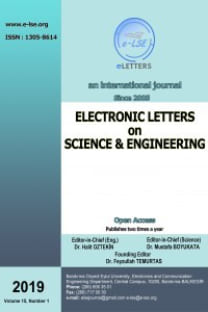Su Kalitesi Kontrolü için Yapay Sinir Aglari Kullanilarak Çözünmüs Oksijen Tahmini
Nehir su kalitesi analizlerinde çözünmüs oksijen (ÇO) anahtar bir parametredir. Çözünmüs oksijenin dogru tahmin edilmesi nehir suyu kalite kontrolü için çok önemlidir. ÇO, Biyokimyasal Oksijen Ihtiyaci (BOI), nitrifikasyon, havalandirma, sedimantasyon, fotosentez, nehir akimi ve su sicakligi gibi bir çok degiskene baglidir bu nedenle çözülmesi zor kompleks bir problem haline gelmektedir. Literatürde incelenen ÇO tahmin metotlari zaman tüketimi ve fazla miktarda parametre kullanilmasi açisindan karisik hale gelmektedir. Yapay sinir aglari insan beyni fonksiyonlarinin basitlestirilmis bir matematiksel temsilidir. Bu çalismada, sinirli sayida veri (NO2-N, NO3-N, BOI, debi ve sicaklik) kullanilarak yapay sinir aglarinin ÇO tahmin kapasitesi incelenmistir. Aylik çözünmüs oksijen degerlerine ileri beslemeli yapay sinir agi uygulanmistir. Yapay sinir agi uygulama sonuçlari incelendiginde ÇO degerlerinin incelen degerlere oldukça yaklastigi belirlenmistir.
Anahtar Kelimeler:
Yapay sinir aglari, çözünmüs oksijen, su kalitesi
Dissolved Oxygen Estimation using Artificial Neural Network for Water Quality Control
Dissolved oxygen (DO) is one of the key parameters when analysing the river water quality. Correct estimation of DO being carried by a river is very important for water quality control. DO is affected by lots of variables such as Biochemical Oxygen Demand (BOD), nitrification, reaeration, sedimentation, photosynthesis, water discharge and temperature for that reason it is hard to solve like a complex problem. The methods available in the literature for DO estimation are complicated time consuming and neccesitate cumbersome parameter estimation procedures. Artificial Neural Networks (ANNs) are a simplied mathematical representations of the functioning of the human brain. This paper examins the potential of ANN in estimating the DO from limited data (NO2-N, NO3-N, BOD, water discharge and temperature). This study employed feed forward (FF) type ANN for computing monthly values of DO. The results of the study clearly demonstrate the ANN results are very close to the observed values of DO.
Keywords:
Artificial neural network, dissolved oxygen, water quality,
- ISSN: 1305-8614
- Yayın Aralığı: Yılda 2 Sayı
- Başlangıç: 2005
- Yayıncı: Fevzullah TEMURTAŞ
Sayıdaki Diğer Makaleler
Bes Eklemli Bir Robot Kolu Için Ileri Kinematigin YSA Ile Çözümü
Su Kalitesi Kontrolü için Yapay Sinir Aglari Kullanilarak Çözünmüs Oksijen Tahmini
B. SENGORUR, E. DOGAN, R. KOKLU, A. SAMANDAR
İkili Gaz Karışımları Üzerine Bir Çalışma
Ali GÜLBAĞ, Uğur Erkin KOCAMAZ, Kader UZUN
Ardisik Kesikli Reaktörde Substrat Konsantrasyonlarinin Yapay Zeka Teknikleri Ile Hesaplanmasi
Ofis Aydinlatmasinda Kisisel Tercihlerin Bulanik Mantik Yöntemiyle Belirlenmesi
Alternatifli Tedarikçi Ortaminda Tedarikçi Seçiminde Bir Yapay Zekâ Uygulamasi
Plak Elemanlarda Deplasman Analizi
OSPF Protokolünü Kullanan Router’larin Maliyet Bilgisinin Bulanik Mantikla Belirlenmesi
